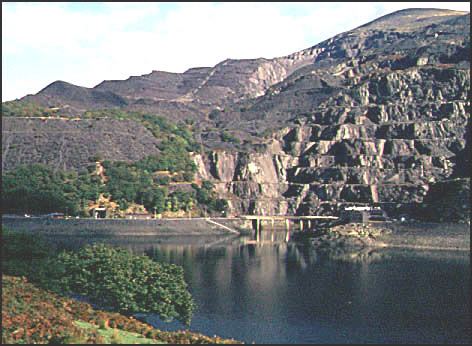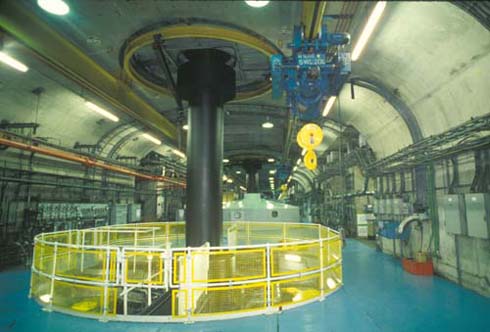PUMPED STORAGE SCHEMES
Water is pumped to the top reservoir when there is surplus (cheap) electricity and released back to the bottom reservoir during periods of high demand (expensive electricity).
They are able to provide electricity instantly – unlike coal fired stations.
There are two large pump storage schemes in North Wales, Ffestiniog and Dinorwig
FFESTINIOG POWER STATION
- Ffestiniog Power Station was the UK's first major pumped storage power facility. [1963]
- Its four generating units can supply the entire power needs of North Wales for several hours.

- Water is stored in Llyn Stwlan - Ffestiniog's upper reservoir.
- Large screens inside the intake towers are opened to activate the high-pressure downflow.
- 27 cubic metres of water per second rush through two high-pressure shafts (each 200 metres in depth), which are connected to four concrete-lined tunnels.
- Steel penstocks direct the water into the power station via inlet pipes and valves to start generation.
- Water is captured in Tan-y-Grisiau and pumped back to Llyn Stwlan, usually overnight, to complete the cycle.
DINORWIG POWER STATION
 
- Dinorwig is the largest scheme of its kind in Europe.
- In 1984 6km of underground tunnels were built deep below Elidir mountain using 1 million tonnes of concrete, 200,000 tonnes of cement and 4,500 tonnes of steel.
- The six powerful generating units stand in Europe's largest man-made cavern.
- Using off-peak electricity, the six units are reversed as pumps to transport water from the lower reservoir, back to Marchlyn Mawr.
- Dinorwig's reversible pump/turbines are capable of reaching maximum generation in less than 16 seconds e.g. to cope with the sudden demand for the kettle at the end of a popular TV programme
|
|